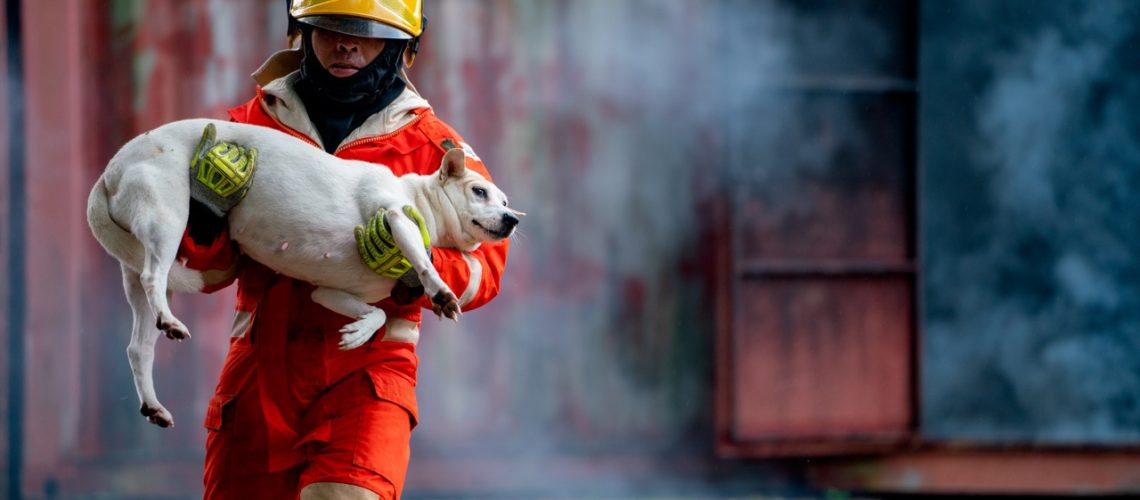While pet animals provide unconditional love and companionship, it is important to acknowledge that even our beloved furry friends can exhibit aggressive behaviors that may lead to unfortunate incidents.
Understanding the different types of pet animal attacks and exploring various scenarios and circumstances surrounding these incidents is necessary for pet owners and potential victims. This article delves into pet animal attacks, specifically focusing on common attacks, such as dog bites, cat scratches, and territorial aggression exhibited by exotic pets.
By examining these behaviors and shedding light on the potential risks, we can gain insight into preventing such incidents and promoting the safety of pets and humans.
Pet Animal Attacks
Animal attacks, particularly bites, and scratches, can pose a significant risk to human safety and well-being.
These incidents are common and can result in injuries and, in some cases, even fatalities.
This section will cover the different types of pet animal attacks and common aggression behaviors exhibited by pets. Additionally, we will examine the specific context of Phoenix, Arizona, regarding pet-related incidents.
Types of Pet Animal Attacks:
Animal attacks, including bites and scratches, are often a result of various factors such as fear, territorial instincts, or feeling threatened.
While pet animals are generally domesticated and friendly, there are instances when aggression may arise.
Dog Bites:
Dog bites are among the most common animal attacks and can cause severe injuries. According to the 2012 U.S. Pet Ownership & Demographics Sourcebook, dog ownership is prevalent in the United States, with tens of millions of injuries occurring annually due to dog bites.
Children are especially susceptible to dog bites, so educating them on how to behave around dogs is crucial. In Phoenix, Arizona, dog bites have been a public health concern.
Cat Scratches:
While cats are generally more independent and less prone to aggression, cat scratches can still occur, especially when they feel threatened or provoked.
Although cat scratches may not be as severe as dog bites, they can still lead to infections if not properly treated. Understanding feline behavior and providing appropriate care can help minimize the risk of cat scratches.
Common Pet Aggression Behaviors
Pets display aggression due to various factors, including fear, protectiveness, lack of socialization, or underlying medical conditions. Recognizing these behaviors can help prevent potential incidents.
Growling and Barking:
Dogs often growl or bark as a warning sign when they feel threatened, scared, or agitated. Understanding their body language and appropriately responding is essential to avoid escalating the situation.
Lunging or Snapping:
Lunging or snapping can occur when a pet perceives a threat or attempts to establish dominance. This behavior is more common in dogs not adequately trained or socialized.
Scratching and Hissing:
Cats may exhibit aggression through scratching and hissing when they feel cornered, scared, or when their personal space is invaded. Proper handling and respecting their boundaries can help prevent aggressive responses.
Pet-Related Incidents in Phoenix, Arizona
Phoenix, Arizona, has experienced its share of pet-related incidents, including dog bites. According to a research brief published by the Arizona Department of Health Services, there were 4,854 reported dog bites in Arizona in 2019. While specific data on cat scratches is not mentioned, it is important to note that any pet can potentially exhibit aggression if triggered or mishandled.
Territorial Aggression in Exotic Pets:
Arizona is home to a diverse range of exotic pets, such as reptiles, birds, or small mammals, which may exhibit territorial aggression.
Arizona’s climate and natural environment can influence these animals’ housing and care requirements, potentially affecting their behavior. Understanding these exotic pets’ specific needs and behaviors is crucial to prevent attacks.
In a nutshell, Animal attacks cause injuries and health risks, including rabies transmission. Understanding common aggression behaviors in pets and promoting responsible ownership helps prevent such incidents.
In Phoenix, Arizona, where pet-related issues are reported, raising awareness, educating owners, and following regulations are crucial for ensuring safety. By taking these steps, the risk of territorial aggression incidents, like dog bites and cat scratches, can be minimized.
Understanding Animal Behavior
Understanding animal behavior is key to fostering a harmonious relationship between pets and their human companions.
By exploring the realm of pet psychology and behavior analysis, we shed light on the complexities of pet aggression and provide valuable insights into proactive measures for pet owners. This section will discuss various factors that influence animal behavior, including breed tendencies, upbringing, socialization, and the role of animal behaviorists and trainers.
Breed Tendencies:
Different breeds of dogs, cats, and exotic pets have inherent traits and tendencies that can impact their behavior.
While breed characteristics are not definitive predictors of aggression, certain breeds may have a higher predisposition to exhibit aggressive behaviors.
Understanding these breed tendencies can assist pet owners in recognizing potential triggers and implementing appropriate training and management strategies to prevent aggressive incidents.
Upbringing and Socialization:
The upbringing and socialization experiences of pets play a significant role in shaping their behavior. Early interactions, exposure to various environments, and positive experiences with humans and other animals contribute to a well-rounded and socially adapted pet.
Inadequate socialization or traumatic experiences during the formative stages can increase the likelihood of aggressive behavior.
Pet owners should prioritize early socialization and provide a nurturing environment to promote positive behaviors.
Factors Influencing Pet Behavior
| Factors | Description |
| Breed Characteristics | Different breeds have distinct traits and tendencies that impact behavior, such as energy levels and instincts. |
| Upbringing and Socialization | Early experiences and socialization shape behavior, emphasizing the importance of positive exposure and training. |
Role of Animal Behaviorists and Trainers:
Animal behaviorists and trainers are valuable resources for pet owners seeking guidance in understanding and modifying pet behavior. These professionals have specialized knowledge and expertise in assessing pet aggression triggers, providing behavior modification techniques, and recommending appropriate training methods. Collaborating with an animal behaviorist or trainer can help pet owners identify underlying issues, implement effective training plans, and address aggressive behaviors safely and humanely.
Risk Factors and Warning Signs
Recognizing the risk factors and warning signs associated with pet animal aggression is essential. By understanding the cues and signals that indicate potential aggression in pets, veterinarians and pet owners can take proactive measures to prevent aggressive incidents. This section will explore common risk factors and warning signs, shedding light on red flags and identifying aggressive pet behaviors.
Risk Factors:
Various risk factors can contribute to pet animal aggression. These factors may include inadequate socialization, previous traumatic experiences, fear or anxiety, pain or illness, resource guarding, or poor training and handling. Identifying these risk factors in pets allows for a proactive approach to managing and addressing potential aggression.
Warning Signs of Aggression:
Pets often exhibit warning signs that indicate potential aggression. These signs may be subtle and easily overlooked, making it crucial for pet owners to be observant and knowledgeable about their pet’s behavior.
Warning signs can include growling, snarling, snapping, showing teeth, raised hackles, tense body posture, stiff tail, dilated pupils, and avoidance or withdrawal. Recognizing these warning signs can help pet owners take appropriate measures to prevent aggressive incidents.
Identifying Aggressive Pet Behaviors:
Certain behaviors displayed by pets can indicate aggression.
These behaviors may include lunging, nipping, biting, scratching, excessive barking or hissing, chasing, or persistent stalking. Understanding these aggressive behaviors allows pet owners to address them promptly and seek professional assistance.
Both veterinarians and pet owners play an important role in identifying and addressing aggressive pet behaviors.
Veterinarians conduct behavioral assessments, guide behavior modification, and rule out any underlying medical causes contributing to aggression. Pet owners, on the other hand, should maintain open communication with their veterinarians, observe their pet’s behavior closely, and seek professional advice if they notice concerning signs of aggression.
By being aware of the risk factors and warning signs in pets, veterinarians and pet owners can take proactive steps to prevent pet animal aggression and create a safe and harmonious environment for everyone involved.
Preventive Measures for Pet Animal Attacks
Ensuring the safety of both pets and humans requires proactive measures and responsible pet ownership. Pet owners can minimize the risk of pet animal attacks by implementing preventive strategies and safety precautions. In this section, we will provide actionable tips for responsible pet ownership and practical measures to safeguard against pet aggression with the assistance of pet trainers and behavior experts.
Proper Training and Socialization:
Enrolling pets in obedience training classes and socializing them from a young age are crucial steps in preventing aggression. Training helps pets develop good manners, respond to commands, and enhance their ability to interact positively with humans and other animals.
Spay/Neuter Pets:
Spaying or neutering pets not only helps control the pet population but can also reduce aggression. Unneutered males may exhibit territorial aggression, while unspayed females might display protective behavior. The appropriate time for spaying or neutering pets depends on species, breed, and individual health considerations. Here are some general guidelines:
- Dogs Neutering: For most dogs, spaying or neutering is typically recommended between 6 to 9 months of age. However, larger breeds may benefit from waiting until they are closer to 1 year old to allow for proper growth and development.
- Cats Neutering: Cats can be spayed or neutered as early as 8 to 12 weeks of age or as a veterinarian recommends. Early-age spaying/neutering is commonly practiced and helps prevent unwanted litters. It also provides health benefits for the cat, including a reduced risk of certain diseases.
It’s important to note that there may be specific considerations for certain breeds or individual health conditions that could affect the timing of the procedure. Consult a veterinarian to determine the appropriate time for spaying or neutering your pet based on their specific needs.
Provide Mental and Physical Stimulation:
Boredom and pent-up energy can contribute to aggressive behavior in pets. Provide ample mental and physical stimulation through interactive toys, puzzle feeders, regular exercise, and playtime. Engaging in activities challenging their minds and bodies can help alleviate aggression triggers.
Create a Safe Environment:
Creating a safe environment for pets involves removing potential hazards and implementing proper containment measures. Secure fencing, leash training, and supervision during outdoor activities can prevent pets from wandering off or encountering unfamiliar animals or individuals that may trigger aggressive responses.
Establish Boundaries and Consistency:
Communicate and establish boundaries with your pet. Consistency in training, routine, and discipline helps pets understand expectations and reduces confusion or frustration that can lead to aggression. Reward positive behaviors and avoid reinforcing aggressive tendencies.
Seek Professional Guidance:
If you notice signs of aggression in your pet, do not hesitate to seek assistance from pet trainers, behavior experts, or veterinarians. They can provide professional assessments, behavior modification techniques, and personalized guidance to address and manage aggression effectively.
By implementing these preventive measures and seeking the guidance of pet trainers and behavior experts, responsible pet owners can significantly reduce the likelihood of pet animal attacks.
Training and Socialization
Proper training and socialization are important in reducing aggression and fostering well-behaved and balanced pet animals. This section will discuss the significance of training and socialization and how these practices prevent pet animal attacks.
Training for Behavioral Development:
Training gives pets essential skills and behaviors to interact positively with humans and other animals. Obedience training teaches commands like sit, stay, and recall, enabling owners to control their pets’ actions better.
Through training, pets learn self-discipline, patience, and appropriate responses, reducing the likelihood of aggressive behaviors.
Socialization for Positive Interactions:
Socialization exposes pets to various people, animals, environments, and stimuli, allowing them to develop confidence and adaptability.
Early socialization, especially during the critical developmental period, helps pets become familiar with different situations, reducing fear and anxiety that can trigger aggressive responses. Animal shelters often play a vital role in socializing rescued pets, ensuring they are better prepared for successful adoptions.
Role of Dog Trainers:
Dog trainers possess expertise in behavior modification and obedience training. They can assess pets’ needs, tailor training programs, and address specific aggression-related concerns. Dog trainers utilize positive reinforcement techniques, teaching pets appropriate behaviors and redirecting or managing aggressive tendencies.
Their guidance and expertise significantly shape a pet’s behavior and reduce the risk of aggressive incidents.
Importance of Animal Shelters:
Animal shelters play a critical role in socializing and training pets, especially those with unknown backgrounds or histories of neglect or abuse.
Shelters focus on creating environments that promote positive interactions, implementing socialization programs, and assessing the temperament of animals to ensure successful adoptions. Investing in the training and socialization of shelter animals can significantly reduce the likelihood of future aggression.
Proper training and socialization are key components in preventing pet animal attacks.
Through obedience training and socialization techniques, pets develop good manners, learn appropriate responses, and become well-adjusted members of their communities.
Responding to Pet Animal Attacks
Being prepared and knowing how to respond to pet animal attacks is crucial in minimizing further harm and ensuring the well-being of both the victim and the pet involved.
In this section, we guide the necessary steps to take during and after a pet animal attack, including seeking medical assistance, reporting incidents, and involving animal control authorities when necessary.
Prioritize Personal Safety:
Focus on ensuring your safety during a pet animal attack. Create distance between yourself and the animal without sudden movements that may provoke further aggression.
Seek Immediate Medical Attention:
Even minor pet animal attacks can result in injuries that require medical attention. Clean wounds with soap and water, apply antiseptic if available, and cover the wounds with a clean cloth or bandage.
Regardless of the severity of injuries, it is important to seek immediate medical attention after a pet animal attack, as professionals can properly assess the extent of the injuries and administer appropriate treatment, including tetanus shots and potential rabies prophylaxis.
Document the Incident:
After ensuring your safety and seeking medical attention, document the incident by taking photographs of your injuries and the location of the attack.
This documentation can serve as evidence in case further action needs to be taken.
Report the Incident:
It is essential to report the pet animal attack to the appropriate authorities. Contact your local animal control authorities or the non-emergency police line to report the incident.
Provide them with all relevant details, including the location, description of the pet, and any information about the owner, if known. Reporting the incident helps authorities track aggressive animals and take necessary measures to prevent future attacks.
Consult Legal Assistance:
Consider seeking legal assistance in more severe cases or situations where legal action may be warranted.
The Sorenson Law Firm in Tempe, Arizona is an animal bite attorney experienced in animal injury cases that can assist you in understanding your rights and potential avenues for seeking compensation for damages incurred.
The Sorenson Law Firm specializes in animal injury cases in Arizona. Our experienced attorney team can provide tailored guidance and support throughout the process.
Remember, each pet animal attack incident is unique, and the appropriate response may vary. Reporting the incident to the appropriate authorities ensures that necessary actions are taken to address the aggression and prevent future incidents.
By following these guidelines, you can contribute to the overall safety of your community and help prevent future pet animal attacks.
In Summary
This article has emphasized the importance of responsible pet ownership and understanding the risks associated with pet animal attacks.
By exploring different types of attacks, discussing factors influencing animal behavior, and providing guidance on prevention, response, and seeking legal assistance, pet owners in Phoenix, Arizona, can enhance their knowledge and take proactive measures to prevent and address pet animal attacks.
By prioritizing proper training, socialization, and recognizing warning signs, individuals can create a safe environment for pets and humans. Remember, responsible pet ownership and prompt action in the event of an attack are crucial in promoting the well-being of pets and ensuring the community’s safety.








